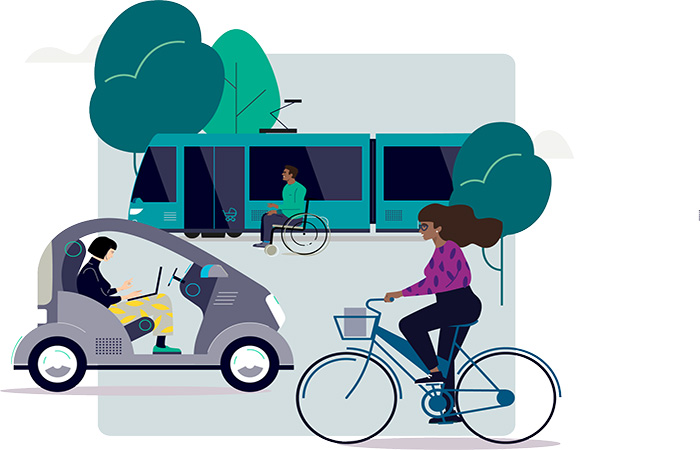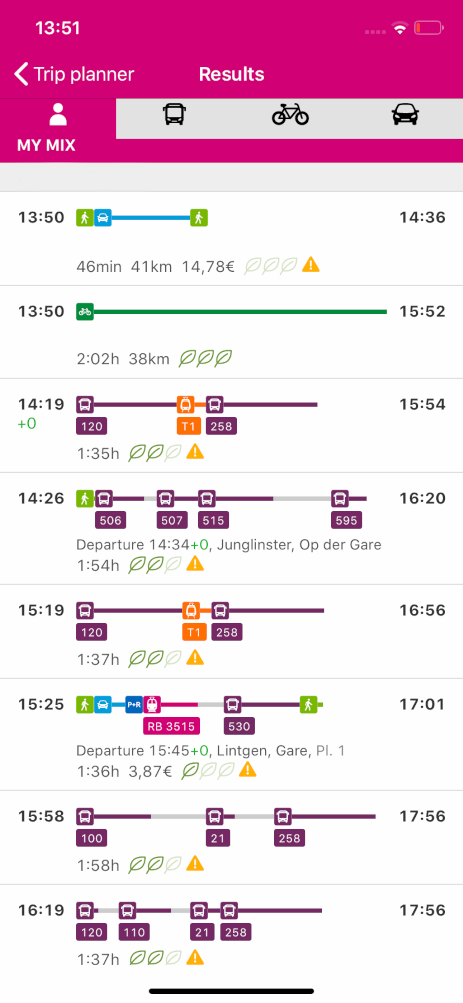Small steps, big effects: How to get started with MaaS
- Like
- Digg
- Del
- Tumblr
- VKontakte
- Buffer
- Love This
- Odnoklassniki
- Meneame
- Blogger
- Amazon
- Yahoo Mail
- Gmail
- AOL
- Newsvine
- HackerNews
- Evernote
- MySpace
- Mail.ru
- Viadeo
- Line
- Comments
- Yummly
- SMS
- Viber
- Telegram
- Subscribe
- Skype
- Facebook Messenger
- Kakao
- LiveJournal
- Yammer
- Edgar
- Fintel
- Mix
- Instapaper
- Copy Link
Posted: 29 November 2022 | Stephan Sünderkamp - Hacon | No comments yet
Mobility-as-a-Service has officially left the status of individual pilot projects behind and is now making its way into the heart of the transportation industry as a standard practice. However, small- and medium-sized transport companies, in particular, are still reluctant to jump on the bandwagon. In this interview, Stephan Sünderkamp, Chief Technology Officer (CTO) – HAFAS at Hacon, explains the reasons why this is the case and how these transport companies can overcome these obstacles and begin profiting from MaaS.


Stephan, what is keeping smaller transport associations from entering the MaaS market themselves?
Any Mobility-as-a-Service project needs more than just a fancy app”
First, there’s the technical complexity. Any Mobility-as-a-Service (MaaS) project needs more than just a fancy app. What is particularly important is a well thought-out backend system that integrates the different provider data and maps all processes for the central user, including payment and back office management. In the case that an intermodal trip needs to be cancelled or changed, cross-provider booking also must be reversible. Thus, a good system is required to manage this complexity. The development of such a system would clearly exceed the in-house capacities of a normal transport company.
In addition to the technical requirements, the commercial side can be seen as an obstacle. Contractual agreements must be made with the mobility service providers to be integrated, necessary standardisation must be implemented and, if necessary, cooperation with payment and verification service providers must be put in place. All in all, comprehensive legal and business management considerations are required: what if, for example, travel chains do not work, or liability issues arise? Some transport companies are, therefore, asking themselves: is this even part of our area of responsibility? And is this effort worth it?
So? Is it worth the effort?
New mobility offers can close these existing gaps for scheduled services and, thus, meet the most diverse mobility needs of travellers”
It is worth it! Public transport is the backbone of any MaaS system. However, the mobility turnaround for public transport cannot be achieved on its own because every network, no matter how well developed, has service gaps. In particular, we know that the struggle with the first- and last-mile cannot be served economically by public transport for every start-destination relation the travellers may need.
New mobility offers can close these existing gaps for scheduled services and, thus, meet the most diverse mobility needs of travellers. Linking different modes of transport is an attractive factor that is also reflected in the actual use of public transport.
Why should public transport companies take action themselves?
For many public transport customers, the possibility of intermodal travel is a new but definitely attractive additional offer that can lead to increased use”
For many public transport customers, the possibility of intermodal travel is a new but definitely attractive additional offer that can lead to increased use – for example, among commuters who are also considering shared mobility for leisure trips for the first time. Transport companies are, therefore, well advised to team up and join forces with the right partners at an early stage – and, more importantly, to make this visible. In this way, they can also reach new customer groups for whom flexible mobility offers as a supplement to bus and rail make access to public transport attractive. If the offer is right, you can also retain these new customer groups in the long term.
In addition, digital MaaS offers help transport companies to have a positive and innovative image: not only is it practical to use public transport and shared mobility, but it is also in line with the spirit of the times to combine individuality with sustainability. This makes the public transport brand attractive and makes it easier for travellers to commit to the companies’ offer.
In addition to regional initiatives, there are also nationwide MaaS projects – such as in the Netherlands. Couldn’t it be an opportunity for small- and medium-sized transport companies to simply join in?
MaaS is perhaps the most significant mobility trend of our time”
I can only encourage transport companies to participate in larger initiatives and take advantage of their benefits. However, they should not wait for it. MaaS is perhaps the most significant mobility trend of our time. Anyone who now misses the technological connection will sooner or later no longer be able to meet the increasing customer expectations of easily accessible, flexible mobility.
Do only complex integrations guarantee future business success? Can’t we go one size smaller?
A MaaS platform can be set up with manageable effort. MaaS projects are only ever as attractive as the offers that are linked via the platform. That is why the integration of the relevant providers for MaaS is a success-critical factor. Regional transport companies can approach their MaaS goal in an evolutionary manner without starting a large-scale project that integrates everything.
Regional transport companies can approach their MaaS goal in an evolutionary manner without starting a large-scale project that integrates everything”
The task is to meet the current needs of passengers with a suitable level of digitalisation to such an extent that the economic balance is maintained for the transport company. Thanks to a modular approach, this is easily possible. It doesn’t have to be a full-scale solution.
For example, the already existing, familiar travel information can be supplemented with initial intermodal travel suggestions. Users can be made aware of the new offers in the app. It is important that the user interface remains user-friendly and clear. Once the way has been paved for further additions – in the ticketing area, for example – these can also be integrated step-by-step. What is crucial for users: they can simply use the new options with their existing account and do not have to register again. Trust in the services is subsequently maintained.
What other options are there to get started with MaaS?


Credit: Hacon
MaaS solutions already exist in very different expansion stages – each tailored to the target group, as well as to the needs and goals of the operator.
As just described, the most common way to get started with MaaS projects is a step-by-step approach to the concept: the existing journey planner app is supplemented with additional transport modes, and information offers, booking and ticketing options are integrated into existing platforms. Acceptance by the customer base is high when apps that have already been introduced keep their front end. This is particularly important when a payment function is integrated. The Rhein-Main-Verkehrsverbund (RMV) in Germany, for example, has chosen this path of gradual approximation.
An open platform approach is also possible. In this case, the MaaS apps from different providers access a common MaaS platform as a basis. Different brandings and the respective front ends can remain. Another advantage is that not every traffic provider is automatically forced to adopt the same configurations. The depth and scope of integration can be tailored to the requirements of individual providers. Rivier, a nationwide MaaS platform in the Netherlands, is a good example of this approach.
Of course, transportation companies can also aim for a complete solution from the outset, with a trip planner, integration of all mobility service providers, a sales platform with an intermodal shopping cart function and, for example, rewards programmes for frequent travellers or travellers without their own vehicles. This is the approach taken by Renfe for its nationwide Mobility-as-a-Service platform in Spain.
So there are many roads leading to Rome…
That’s the way it is. And, even with small steps, transport companies can achieve big effects. The only important thing is that you have to take the steps you take consistently. Word of the user-friendliness and reliability of MaaS offers quickly gets around among users. From my point of view, a MaaS platform is optimal if it fits the regional situation of the provider, is based on scalable standard software, enables stakeholders to work together in a spirit of partnership and bundles the existing mobility offers in a meaningful way that focus on the interests of the traveller. Only those who convince users that they can, in the long-term, significantly increase the relevance of intermodal connections in the overall travel volume, will make it easy for many users to switch from their own car. And that is our goal.
Related topics
Journey Planning, Mobility Services, Multimodality, Passenger Experience, Public Transport, Ticketing & Payments, Travel & Passenger Information
Related organisations
Hacon A Siemens Company, Renfe, Rhein-Main-Verkehrsverbund (RMV)
Related people
Stephan Sünderkamp








